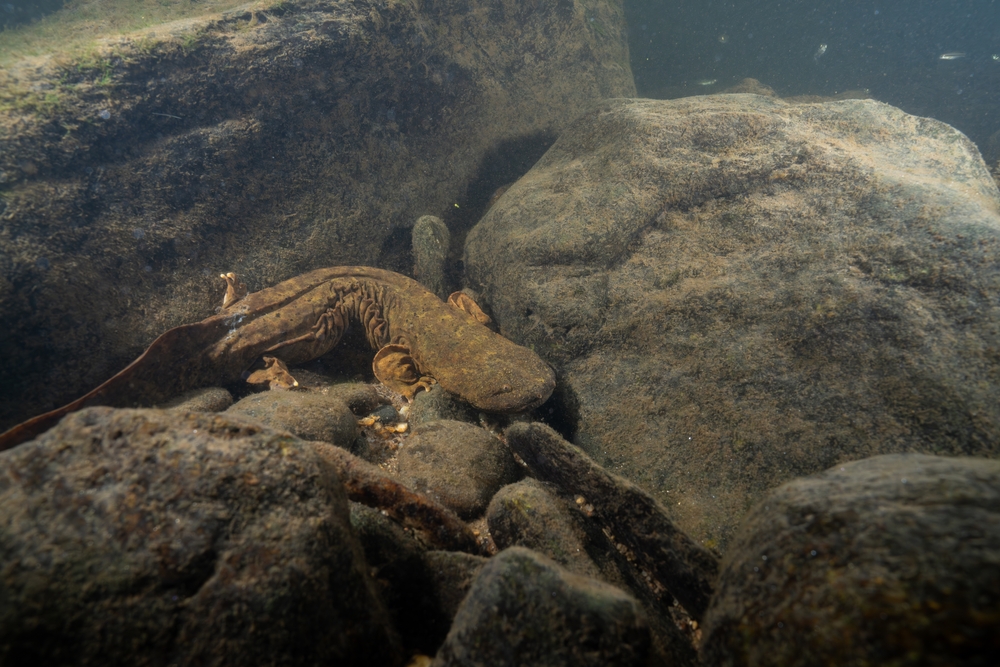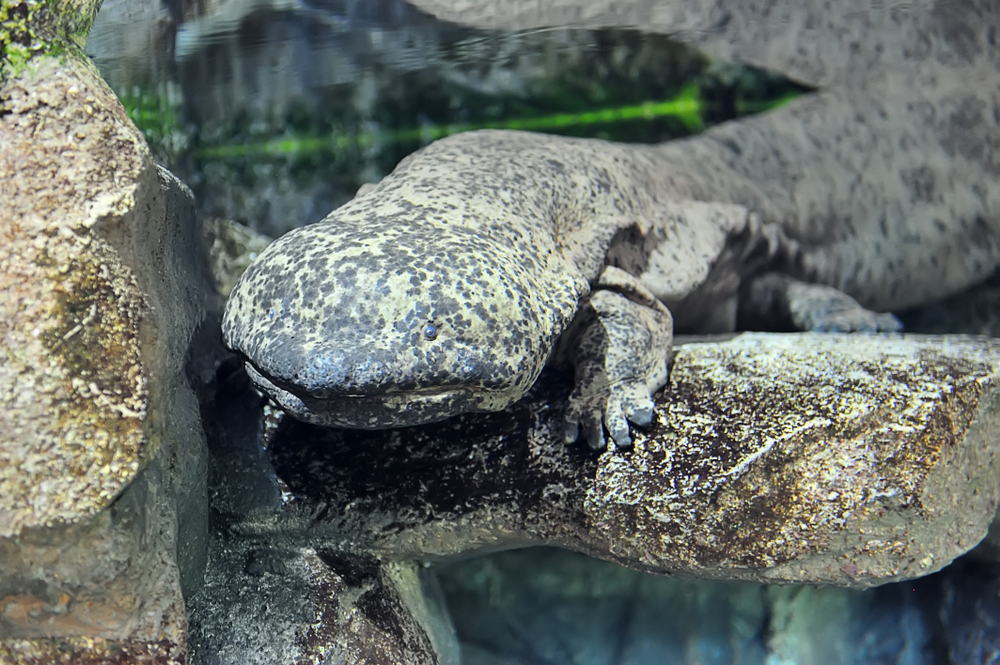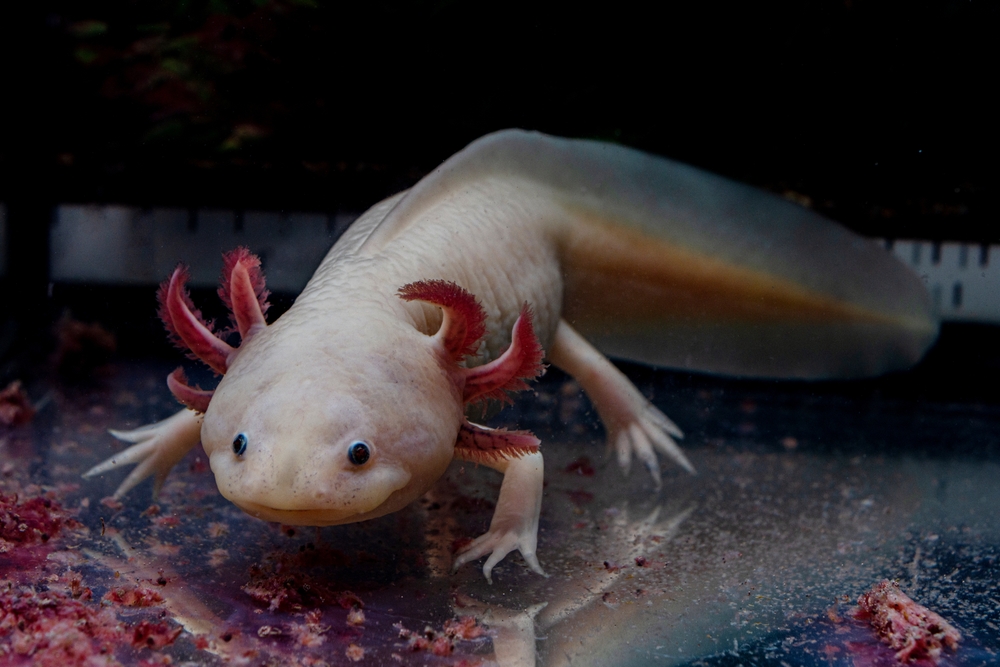Uniqueness
One of the Largest Salamanders in North America:
The hellbender (Cryptobranchus alleganiensis) is the largest aquatic salamander in North America, reaching lengths of up to 29 inches (74 cm). Its massive, flattened body and wide head set it apart from all other North American amphibians, both in size and appearance.
Wrinkled Skin for Aquatic Respiration:
Hellbenders are entirely aquatic and lack lungs or gills in adulthood. Instead, they rely on cutaneous respiration, absorbing oxygen through their loose, wrinkled skin folds, which dramatically increase surface area. This adaptation enables survival in cold, fast-flowing, highly oxygenated streams.
Ancient Lineage – A Living Fossil:
As a member of the Cryptobranchidae family, the hellbender belongs to an ancient group of salamanders whose ancestors date back over 160 million years. Their physiology and behavior have remained largely unchanged, making them living fossils and evolutionary relics of the prehistoric world.
Unique Suction Feeding Strategy:
Hellbenders use a sudden suction mechanism to capture prey. Unlike most amphibians that use their tongues, hellbenders open their mouths rapidly, creating a vacuum that draws in prey. This feeding method is rare among amphibians and perfectly adapted to a life under submerged rocks.
Male Parental Care:
Hellbenders exhibit rare paternal behavior among amphibians. During breeding season, males excavate nests and guard the eggs for 1–2 months, protecting them from predators and fanning them to ensure oxygenation—essential for successful development.
Sentinel Species for Freshwater Health:
Because hellbenders require clean, cool, well-oxygenated water, their presence (or absence) is a powerful indicator of stream health. They are highly sensitive to pollution, sedimentation, and habitat destruction, making them bioindicators for ecosystem integrity.
Colorful Folk Names and Cultural Identity:
Known by nicknames like “snot otter,” “lasagna lizard,” “mud devil,” and “Allegheny alligator,” the hellbender holds a unique place in local folklore and conservation culture throughout the Appalachian region and beyond.
Summary:
The hellbender is a highly specialized, ancient amphibian with a distinctive biology: massive size, wrinkled skin for respiration, suction feeding, and paternal care. Its role as both a living fossil and a stream health sentinel makes it one of the most biologically and ecologically unique salamanders in the world.





































































